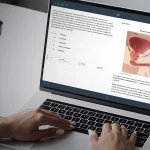A core part of PA school is the OB-GYN clinical rotation, an unforgettable experience for all the right reasons. It blends precise care with meaningful patient interactions, offering you a front-row seat to everything from prenatal counseling to surgical procedures. While this rotation requires effort and perseverance, it’s all worth it. Why? Because you’ll apply your didactic knowledge for a vital purpose: enhancing women’s health.
Don’t miss these tips to stay prepared, build confidence, and ultimately succeed in your OB-GYN clinical rotation.
Skills You’ll Need to Succeed
You’ve likely built a strong foundation in earlier rotations — OB-GYN will help you refine that clinical expertise. Women’s health centers, private practices, and hospitals will see you as a valuable asset if you bring these in-demand skills:
- Caring for diverse patients: You'll learn how to meet patients where they are — culturally, emotionally, and clinically — while providing evidence-based care and appropriate resources.
- Performing screening tests: Pap smears, pelvic exams, and STI testing are routine procedures you’ll practice under supervision. It’s also important to learn how to counsel patients on the value of preventive screening. Your preceptor will ultimately determine how many of these tests you can safely and confidently perform.
- Monitoring fetal health markers: Few procedures connect you with patients as closely as measuring fetal heart tones and fundal height. With these assessments, you’ll provide insights into fetal development and overall well-being — putting smiles on the faces of expectant mothers.
- Scrubbing and gowning: In a sterile environment, procedures run more smoothly. That’s the winning philosophy you’ll adopt when learning to “scrub in” and “gown up” properly before participating in a surgical procedure.
Stay 2 Steps Ahead
Many PA students agree that you can never overprepare for the OB-GYN rotation. Knowledge is power, and you’ll need every ounce of it to gain medical and surgical proficiency. Here are some tips to excel:
- Understand trimester-specific tests: Procedures like the glucose tolerance test (GTT) are typically performed between 24-28 weeks of gestation, while Group B streptococcus (GBS) screening occurs at 36-37 weeks. Knowing what to expect during each trimester helps you anticipate patient needs.
- Watch clinical-skill videos: Before you enter the clinic, watch tutorials on routine procedures and how to scrub, gown, and glove properly. Observing these tasks will boost your confidence and comfort in real clinical settings.
- Review focused histories: Know what questions to ask for common complaints like abnormal bleeding, pelvic pain, or prenatal checkups. This will showcase your clinical reasoning skills and impress your preceptor.
Core Topics to Know
Let’s talk about the gynecologic, sexual, and reproductive health (formerly women’s health) End-of-Rotation (EOR) exam topic list. To succeed in your OB-GYN rotation and excel in the EOR exam, focus on mastering these high-yield areas:
- Common infections: BV, PID, trichomoniasis, chlamydia, gonorrhea
- Menstruation: cycle physiology and causes of abnormal bleeding
- Neoplasms: breast, endometrial, cervical, and ovarian cancers
- Contraception: indications, side effects, and contraindications
- Prenatal care: labs and imaging at each stage
- Pregnancy complications: ectopic pregnancy, gestational diabetes, preeclampsia
- Placenta previa vs. abruption: presentation and management
- Normal labor and delivery: stages, expected timing, and warning signs
Check out the list below for comprehensive topics covered on the EOR exam.
Gynecology
| Menstruation | Amenorrhea, dysfunctional uterine bleeding, dysmenorrhea, menopause, normal physiology, premenstrual dysphoric disorder, premenstrual syndrome |
| Infections | Cervicitis (gonorrhea, chlamydia, herpes simplex, human papillomavirus), chancroid, lymphogranuloma venereum, pelvic inflammatory disease, syphilis, vaginitis |
| Neoplasms | Breast cancer, cervical carcinoma, cervical dysplasia, endometrial cancer, ovarian neoplasms, vaginal/vulvar neoplasms |
| Disorders of the Breast | Breast abscess, fibroadenoma, fibrocystic disease, mastitis |
| Structural Abnormalities | Cystocele, ovarian torsion, rectocele, uterine prolapse |
| Other | Contraceptive methods, endometriosis, infertility, leiomyoma, ovarian cyst, sexual assault, partner neglect/violence, urinary incontinence |
Obstetrics
| Prenatal Care/Normal Pregnancy | Apgar score, fetal position, multiple gestation, normal labor and delivery (stages, duration, mechanism of delivery, monitoring), physiology of pregnancy, prenatal diagnosis/care |
| Pregnancy Complications | Abortion, ectopic pregnancy, gestational diabetes, trophoblastic disease, incompetent cervix, placental abruption, placenta previa, preeclampsia/eclampsia, pregnancy-induced hypertension, Rh incompatibility |
| Labor and Delivery Complications | Breech presentation, dystocia, fetal distress, premature rupture of membranes, preterm labor, prolapsed umbilical cord |
| Postpartum Care | Endometritis, normal physiological changes of puerperium, perineal laceration/episiotomy care, postpartum hemorrhage |
QBanks are essential for exam prep. Look for those written by subject matter experts with in-depth answer explanations, like UWorld's PA exam prep.
These must-have study tools support spaced repetition, a learning technique best used when defining terms or recalling treatments and clinical features. For a digital version, check out these flashcards.
Ideal for sharpening clinical reasoning skills, these articles provide access to unbiased, current research. This medical library contains over 700 articles, including those on gynecology and obstetrics.
Final Thoughts
- Keep an open mind! Ask questions, explore further research, and stay engaged during your rotation. Who knows? You might discover a topic that piques your interest. At the very least, you’ll demonstrate your curiosity, which preceptors always appreciate.
- Develop strong relationships with everyone around you — not just your preceptor.
- Request regular feedback on your performance and use constructive criticism to improve your skills.
- Be proactive! Review material in advance instead of cramming the week before the EOR exam.
- Pack snacks and wear comfortable, supportive shoes, especially for long shifts in labor and delivery.
- Prioritize self-care after each shift to support your well-being and prevent burnout.
Lastly, cherish this experience! Before you know it, it’ll be over, and you’ll be on to your next PA clinical rotation. With these tips and resources, you won’t just survive your OB-GYN rotation — you will thrive. For additional guidance from a top-performing PA student, follow @pa2_be.






